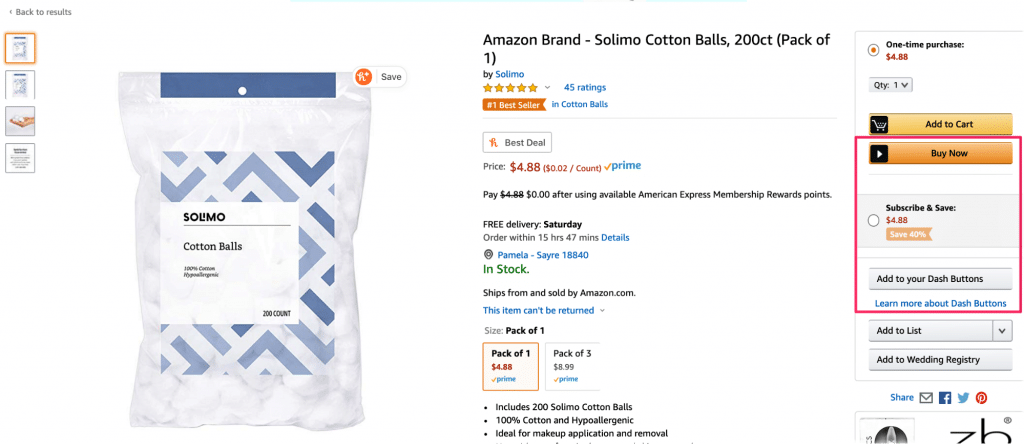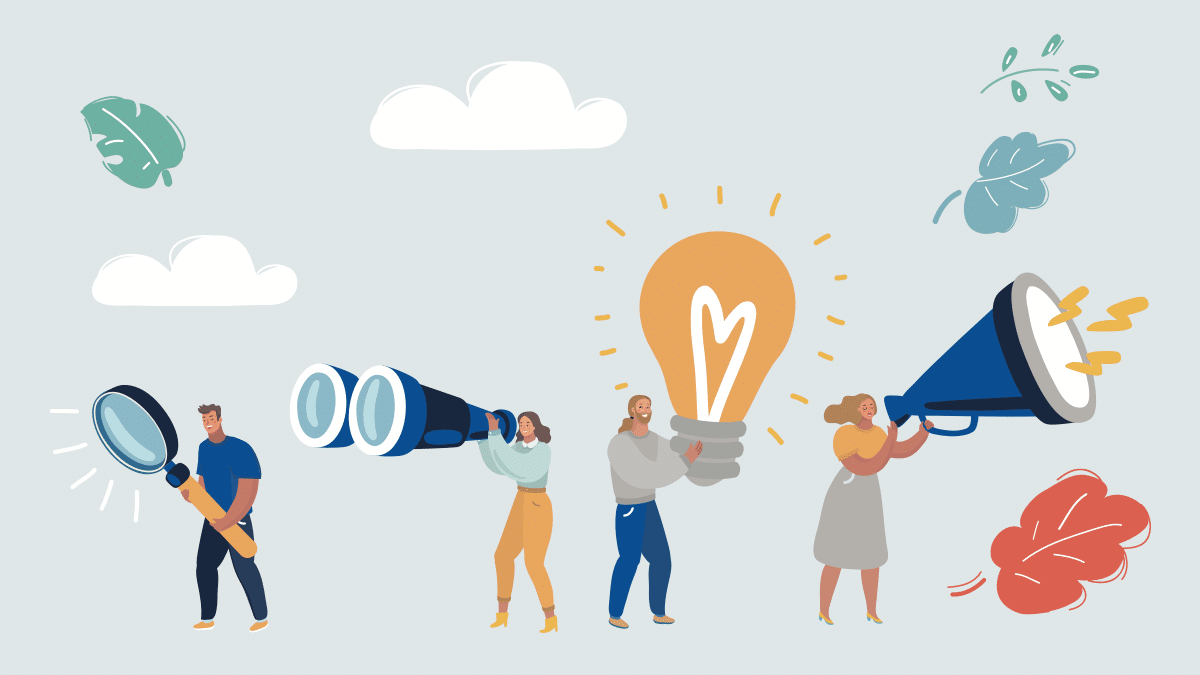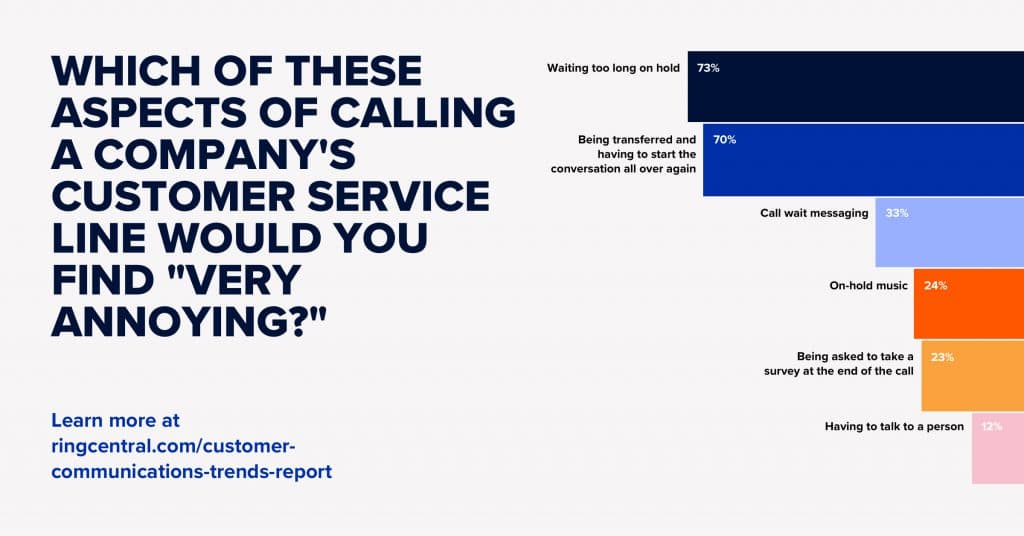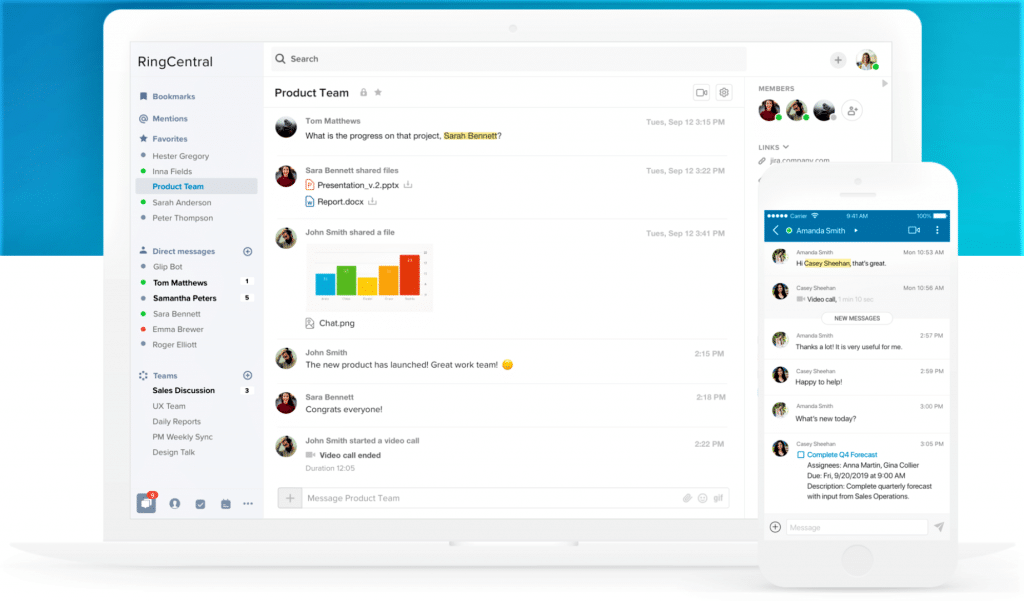Just having a great product or service isn’t enough to make a lasting impression with customers anymore. While it certainly doesn’t hurt, customers are expecting something more. They’re looking for experiences, not just items.
In fact, 41% of customers have said they’ve stopped using a product or service after having to repeat themselves over and over after being passed from rep to rep. One negative experience could cost your business some serious customer retention.
“Customer experience” (often abbreviated to CX) is the feeling your customer gets when interacting with your brand, either good or bad. Over the past few years, it’s become a major focus for marketers, salespeople, and businesses as a whole because a great customer experience helps differentiate the brand.
In this post, we’ll look at:
- What makes a “great” customer experience?
- How is customer experience different than customer service?
- Why is customer experience so important?
- How to improve your customer experience in 5 steps
- Further reading on customer experience (if you want to do a really deep dive)
🔍 Access Metrigy’s free report to learn more about the 2022 state of customer experience technology.
What makes a “great” customer experience?
The tricky thing about great customer experiences is that they depend on your audience too—what one audience deems “great” might not fly with a different group of people.
However, great customer experiences usually come down to three main things:
- an easy-to-use product or service,
- your customer gets value out of their relationship with you, and
- your customer enjoys interacting with your business
In other words, great customer experience makes the purchasing process a little bit more personal. Ultimately, good CX goes beyond just the buying step (when someone becomes a new customer)—it creates a memorable buying journey that encourages your customers to become loyal buyers.
Everything from the friendliness of your team, to how long your customers have to wait on-hold to talk to you can affect your customer experience:
Next, let’s look at the difference between customer experience and customer service. (Yes, they’re different.)
How is “customer experience” different from “customer service”?
Although it might sound like it, customer experience isn’t just a new name for the same customer service businesses have been delivering to customers for decades.
Customer service is reactive. It’s there to provide customers with assistance when they run into a problem, or when they have questions during the buying process.
Customer experience, on the other hand, is proactive and infused into every step the customer takes. It anticipates what they need before they even come to you with a question.
Why is customer experience so important?
Customer experience builds loyalty to your brand and gets more people aware of it—or it can prevent people from ever coming back again.
When a customer is happy with the experience they have with you, they’ll come back. If they’re not, they’ll probably avoid your brand at all costs (and if they’re really unhappy, you might have to deal with negative reviews online too).
Loyal customers are great for business in dozens of ways. Not only are they more likely to buy from you again, but they’ll also spend more, tell their friends about you, and leave glowing reviews. They become brand ambassadors, helping your business exponentially faster without you having to do any work.
A great customer experience can also help you stand out from the competition.
Customers expect to be taken care of. If you can give them that, they’ll come back again and again—sometimes, even if your product isn’t the best one out there.
How to improve your customer experience in 5 steps
To take your customer experience up a notch, you need to have a customer-first business model. This means your customers—not profits—are at the center of everything you do. (Or at least, that has to be the perception of you.)
To adopt this mindset, here are five steps you can take to improve your customer experience:
-
Recognize your customer as a human, not a sales opportunity.
Customers expect deeper relationships and connections with the brands they give their money to. If you can’t or won’t give them that, they’ll move to your competitor who can offer those things.
One big example: if you try to upsell your customers every time you connect, they’re going to dread communicating with you.
When a customer comes to you with a problem or question, remember—they’re human. If they’re frustrated about a product not working or they’re unhappy with your service, asking them to purchase another item probably isn’t the right thing to do.
-
Communicate on your customers’ terms.
Everyone has different communication needs. Phone calls (do you have an inbound calling strategy?), emails, SMS, instant messages—we all have our own preferences for getting in touch with our friends, colleagues, and businesses.
If you want to deliver a truly awesome customer experience, you need to have communication options that meet each of those needs.
Pro-tip:If you want to give your customers different options of reaching out, check out communication apps (like RingCentral Engage) that let you talk to them on the channels of their choice:
Even if this seems excessive (who really needs four different ways to contact a company anyway?), it’s just what customers today expect. Communicating on your customers’ terms shows you’re there for them—not expecting them to change their behaviors to fit in with what you’re used to doing. By meeting them where they are, you can show them that you respect their time and preferences, and take the first step to building solid relationships that turn into long-term partnerships.
-
Work together as a team.
Sometimes, you won’t be able to answer your customers’ questions right away. That’s okay. This is where customer service teamwork is really important. Someone else might have the answer, or a manager might be able to approve a discount or refund for an angry customer. Don’t let your reps work alone.
This is yet another reason why it’s super helpful to have a team messaging or communication app: it helps you solve your customers’ questions much faster.
-
Use continuous insights, not one-time studies.
Your customers’ needs are dynamic. Even if your products or services are rooted in studies and research, if you’re not continuously monitoring the behaviors and needs of your customers, you could be missing out on ways to give them the best experience possible.
Consistently measure how your customers are reacting to experiences within your brand using customer experience analytics and reporting, such as performance reports and quality of service reports.
Assess how your customers think and feel during each phase of the buyer’s journey and look for opportunities to continue positive experiences or resolve negative ones.
Take every opportunity to learn about what your customers are looking for. Make note of how they’re connecting, why they’re connecting, or if they’re having any trouble getting through to you.
As you learn more about the experiences your audience enjoys, you can refine your CX so it continues to match what they’re looking for.
-
Evaluate CX across other industries too.
When it comes to customer experience, you’re not just competing with companies within your space—you’re also going head-to-head with brands outside your industry.
Why? Because customers are interacting with tens, maybe even hundreds of brands every day. Their expectations are constantly rising. If you’re not keeping up with those expectations, a CX that was once good can quickly become “meh.”.
Follow brands that consistently deliver a great customer experience (we’ll get to some examples in a minute) and try to apply what they do to your own business.
Pro-tip:Remember to measure your customers’ reactions to new ideas you’re trying. What works well for another brand doesn’t necessarily mean it will work well for yours.
What are examples of great CX?
Some companies have built entire businesses on having great customer experiences. Here are some examples—along with ideas you can steal:
-
Amazon
There’s a reason Amazon is the retail giant that it is. Customers can buy just about anything they need in one place and get it delivered (in some locations) just hours later—all without needing to pay the fees often associated with express shipping.
Not only are shoppers able to easily locate the items they need, but they can also take advantage of tools and features that make the buying process even easier, including one-click buying, subscription purchasing, and the quick-purchasing Virtual Dash Buttons (aka the one-click button for items a customer frequently buys):

One-click buying, subscription purchasing options, and Dash Button options are all easily accessible in the Amazon product page.
Amazon’s CX is strong because it makes purchasing, delivery, and even returns super easy for shoppers. They’ve changed the online buying game, forcing competitors to keep up with their quick-delivery, low-cost standards.
Main takeaway: We’re not telling you to go head-to-head with Jeff Bezos, but we are suggesting you steal Amazon’s streamlined purchasing process.
To make your customers’ buying experience smooth, eliminate any unnecessary barriers that might push the buyer to change their mind before completing the purchase. Clearly display check out options if you have an ecommerce platform, or add click-to-call features if customers need to get in touch with a sales rep.
Customers want buying to be easy. Make sure it is.
-
Southwest Airlines
Airlines seem to all have a reputation for being bad. They overbook flights, expect you to pay for “upgrades” like carryon luggage (or choosing your seat), and cram people in seats that are way too small. But while other airlines are getting trashed for their poor experience, Southwest Airlines is praised:

Southwest’s customers are generous with their praise on Twitter.
Despite competitors finding ways to charge an additional fee for just about everything, Southwest has remained true to their dedication to friendly, reliable, low-cost air travel. But Southwest’s customer experience goes beyond just offering the best price.Southwest offers a great customer experience by also creating a positive environment for their employees. They’ve never had a layoff or cut employee’s pay, and even introduced a profit-sharing plan to employees in 1974—that equal as much as six weeks of extra pay for some employees. They make gratitude a priority and even have their own internal system, Kick Tails, that encourages employees to recognize when their coworkers do great work.
When your employees are happy, they’ll create positive experiences for your customers.
Main takeaway: Great customer experience starts with effective teamwork internally. Maybe you can’t propose a profit-sharing business model with your employees, but you can find unique ways to show your appreciation and motivate them to perform their best work.
One of the easiest ways to do this is by using tools and software that make your team’s jobs easier. When your employees are equipped to meet customer needs and demands in an efficient way, they’ll do so.
Take RingCentral, for example, which makes it easy for teammates to phone and video-call to get information about customers from each other quickly:
-
Nordstrom
By now you’ve probably heard the story about the man who returned tires to Nordstrom, even though Nordstrom doesn’t even sell tires. While it’s still up in the air if the story is even true, it’s legends like these that get shared time and time again, ultimately solidifying a brand as one of the greats in customer experience.
Nordstrom has developed a reputation for accepting any return. But this experience goes far beyond just giving unhappy customers their money back. The willingness to listen to the customer and provide a fair solution ensures both parties can walk away happy:

Nordstrom’s returns policy is just one reason their customers love them.
In Nordstrom’s returns policy, they lay it out simply. Their ultimate objective is making their customers happy, treating them fairly and reasonably and expecting the same in return. Through prioritizing their customer’s happiness, they’ve become legendary. Customers are comfortable knowing Nordstrom will have their back if they’re unhappy with a product or service.Main takeaway: Nordstrom is able to have such a flexible return policy because of their billions of dollars in revenue, but their approach to working with dissatisfied customers doesn’t cost a dime.
When a customer is already unhappy with a product or service they’ve purchased, it’s easy to get defensive. But getting angry or upset with the customer won’t make them change their mind—and it definitely won’t convince them to try your products or services again in the future.
You may not be able to offer refunds as generously as Nordstrom, but do your best to treat every customer fairly and reasonably. (This could be through the form of exchanges, future discounts, and other benefits that are slightly less costly for you.)
Further reading:
Want to dive even deeper into the world of customer experience? Here are more must-reads:
- Customer experience statistics
- CX analytics
- How to improve your customer experience
- Everything you need to know about CX surveys
- A more in-depth look at the difference between “customer service” and “customer experience”
- 6 ways to measure your CX
Ready to build a great customer experience?
Here’s the thing. You probably won’t create a great customer experience in one go. In order to keep your customers happy, you need to provide an experience that impresses consistently (and you’ll need to evolve over time too to stay ahead of competitors).
Begin your CX journey by getting to know your customers, the other brands they engage with, and the expectations they have. Look for opportunities to fill gaps where your competitors or even brands outside your industry might be missing.
But remember, above all, focus on building connections through strong communication. When you focus on providing your audience with the assistance, advocacy, and respect they deserve—in all situations—they’ll have a positive experience.
Originally published Oct 25, 2020, updated Jun 01, 2022







